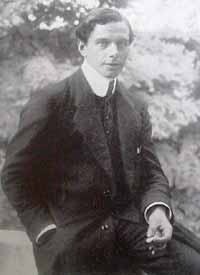GermanExpressionism.com >> Artist Index >> Ernst Ludwig Kirchner Biography
1880-1938

View a selection of Ernst Ludwig Kirchner Prints
Ernst Ludwig Kirchner grew up in the working class town of Chemnitz. He studied painting in Munich and architecture at the Saxon Technical School in Dresden. In 1905, he formed Die Brücke group along with fellow architecture students, Frity Bleyl, Erich Heckel and Karl Schmidt-Rottluff. Kirchner was considered the group's leader and he recruited Max Pechstein and Emil Nolde to join the movement in 1906. It was Kirchner who introduced the group to Primitivism as manifested in the art of the South Seas.
During World War I, Kirchner struggled with alcoholism and he was discharged from the army in 1915 to enter the sanatorium at Kreuzlingen. Over the next few years, he was in and out of institutions both in Germany and Switzerland. His chronic insomnia led to dependence on drugs and alcohol which intensified his severe emotional and physiological problems.
In 1921, he had an exhibtion of fifty works at the Kronprinzenpalais in Berlin and in 1923 he had a retrospective show at the Kunsthalle in Basel. In 1931, he was apointed a member of the Prussian Academy of Fine Arts. In 1937, he was asked to resign after the Nazis declared his art "degenerate" and confiscated 639 works from museums in Germany. Ironically, the same year, he had an exhibition at the Detroit Institute of Art in the United States. Kirchner had 32 works displayed in the infamous Degenerate Art exhibition in Munich. In 1938, distraught over the Nazi denunciation of his work, he committed suicide.
Kirchner produced more than 2,000 prints, making him one of the most prolific printmakers of the period. Half of these were woodcuts and most were handprinted by Kirchner in editions of less than ten.